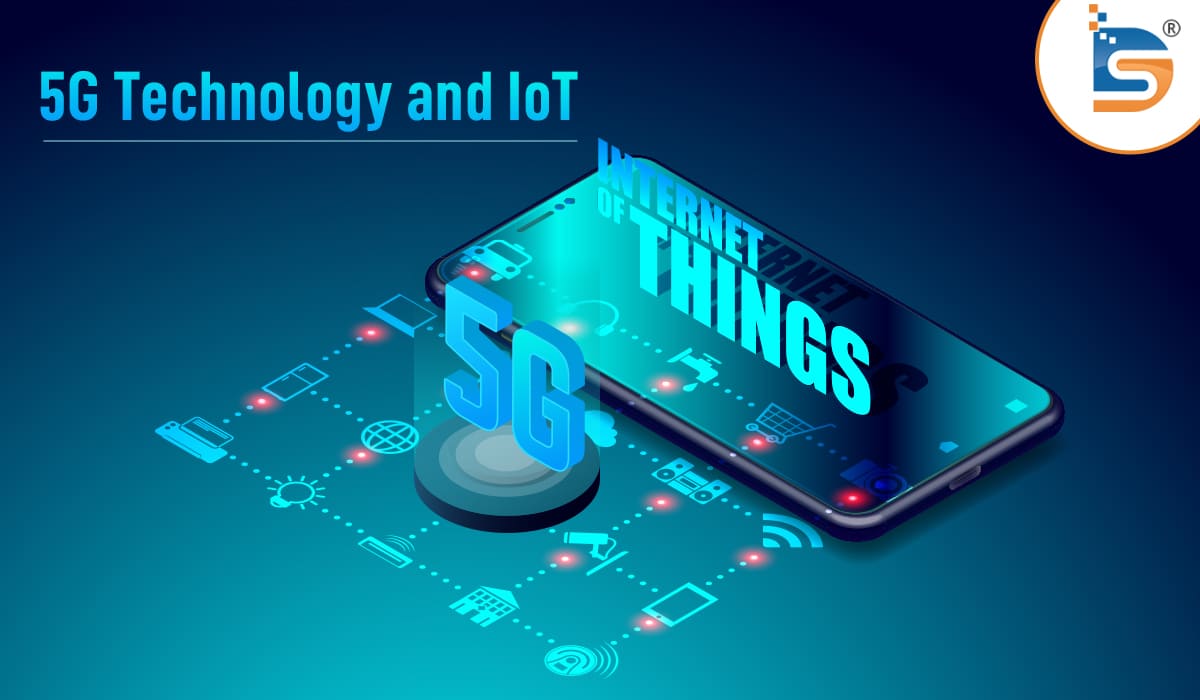5G Technology: Game Changer For The Internet of Things
BY : Sdreatech
23-Aug-2022

5G technology is a Changer For The Internet of Things (IoT) will revolutionise the future of technology. Imagine a world where smart homes automatically unlock doors with a face scan, adjust the lighting and temperature, and order milk before you run out. Cool… Right…!
The integration of 5G technology and IoT has already begun to make its way into medical devices, self-driving cars, manufacturing, and even consumer-education devices. According to the GSM (Global System for Mobile Communications) Association, 5G connections are expected to reach 1.8 billion by 2025.
In 2020, the 5G IoT market was worth USD 1.5 billion. It is expected to reach USD 40 billion by 2026, at a CAGR of 72.9% from 2021 to 2026. Transmission technology is an important part of Internet of Things (IoT) technology. It automatically makes the new 5G connectivity technology crucial for the IoT. 5G will make connections between devices faster, more efficient, and reduce delays.
Internet of Things (IoT) with 5G Network
A 5G implementation and an IoT implementation are very different from each other. This is primarily about the standards that are available for either architecture.
5G is heavily regulated and is based on a well-established set of standards developed by industry organisations such as the Third Generation Partnership Project and the United Nations International Telecommunications Union.
Also Read: IoT In the Gaming Industry
Impact of 5G on the Internet of Things
5G networks will considerably enhance the performance and dependability of IoT devices. This is how:
1. High-Speed Data Transfer
IoT devices can be more helpful if they can communicate with other devices more quickly. Data transfer speeds will grow dramatically within 5G networks. As a result, IoT devices will be much more efficient.
2. Reduce delay
Latency is the time between the transmission and reception of information. The lower the latency rate, the more efficiently software can exchange data with IoT devices. 5G networks have significantly lower latency rates than 4G.
3. Enhanced capacity of the device
5G networks have the bandwidth to accommodate more IoT devices, a feature that arrives just in time given the massive expansion of IoT that is likely to continue in the coming years.
4. Enhanced network reliability
5G networks will be more dependable, leading to more consistent connections. This stability is very important for IoT devices that protect and keep people safe, like connected locks, security cameras, and medical devices.
5. Increased security
One disadvantage of the growth of IoT devices is that each new device provides hackers with a new attack channel. That's why manufacturers are making 5G devices more secure.
Also Read: Integration of Big Data and IoT into Industry 4.0
Risks that 5G Network Brings to IoT
Along with numerous opportunities, IoT and 5G raise security issues. Connecting more gadgets and allowing more data flow sounds exciting, but there are security risks.
- Increased surface area for Distributed Denial of Service (DDoS) attacks on devices in the Internet of Things
- The proximity service is a key feature of 5G that makes it easier for devices to talk with each other. This means emergency, vehicle-to-vehicle, and IoT devices can communicate faster.
- Transmitting sensitive information, financial data, and government data is crucial. If bad hackers have this data, it's a risk for everyone. The economy of the country can be at risk.
- SS7 allows network devices to exchange data. 5G will also be using the same protocol. This has been considered unsafe because it can be attacked even with two-factor authentication.
- With the arrival of 5G, there will be a need for more IP addresses, and there is a serious concern that people will choose public IPv6, leaving them very open to the outside world.
- The lack of people at IoT remote locations raises security risks. Edge computing requires policies like the Zero trust policy to maintain network compartmentalization and safety. But zero-trust is just starting to get going.
Also Read: How IoT can help grow your Business
Why 5G Technology is important for IoT
There are 7 billion devices connected to the internet around the world right now. By 2025, it is expected to be 21 billion.
5G is improving communication and making it possible for a lot of IoT devices to work. The fifth-generation wireless network (5G) is bringing benefits to a wide variety of business sectors, in addition to our mobile devices.
With lower latency, augmented and virtual reality can be better, remote control of vehicles and procedures can be safer and more accurate, and it's much easier to scale up with a lot of IoT devices.
Wrapping Up
The combination of 5G and the Internet of Things is helpful in many ways. The Internet of Things (IoT) can do more because 5G technology has built-in benefits that make it better. This makes the IoT more powerful. IoT can be utilised in extraordinary ways with 5G technology. It is imminent that 5G technology will support IoT environments.
Now is the time to spread the word about the value that this unique combination of technologies can bring to your business. At Sdreatech, we leverage the latest, most promising technologies to help organisations maximise their earnings.